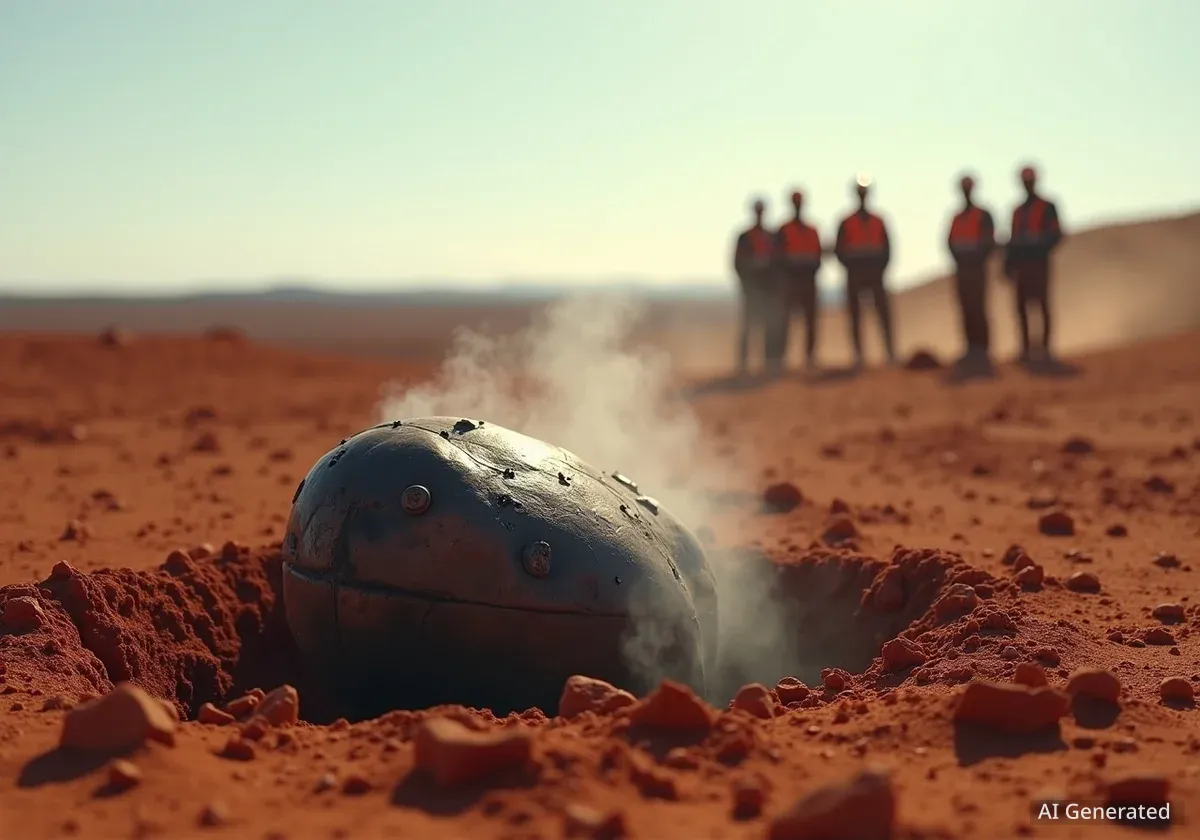A United Airlines flight from Denver to Los Angeles made an emergency landing in Salt Lake City after the cockpit windshield shattered at an altitude of 36,000 feet. The pilot of the Boeing 737 reported a mid-air impact, suggesting the cause might have been space debris.
The incident, which occurred on Thursday, resulted in visible damage to the aircraft but ended with a safe landing for all 140 passengers on board. The pilot sustained a minor arm injury. An investigation is now underway to determine the exact cause of the high-altitude strike.
Key Takeaways
- United Airlines Flight 1093 was diverted to Salt Lake City after its windshield was damaged mid-flight.
- The captain reported the impact occurred at 36,000 feet and suspected it was caused by space debris.
- The Boeing 737, carrying 140 passengers, landed safely, with only a minor injury reported for the pilot.
- Aviation experts express skepticism about the space debris theory, citing the extreme rarity and physics of such an impact.
- An official investigation is in progress to identify the object that struck the aircraft.
Details of the In-Flight Emergency
United Airlines Flight 1093 was en route from Denver International Airport (DEN) to Los Angeles International Airport (LAX) when the crew declared an emergency. The pilots reported a significant impact that resulted in cracks spreading across the cockpit windshield.
Following protocol for such an event, the flight crew initiated a controlled descent and diverted the aircraft to the nearest suitable airport, Salt Lake City International Airport (SLC). The Boeing 737 landed without further incident, and emergency services were on standby as a precaution.
While none of the 140 passengers were harmed, the pilot reportedly suffered a minor injury to his arm from fragments inside the cockpit. After landing, passengers were provided with a replacement aircraft to complete their journey to Los Angeles.
Pilot's Report Points to Space Debris
Initial reports about the cause of the damage came from the flight's captain. According to aviation social media account JonNYC, which first shared details of the event, the pilot told ground crews he believed the aircraft was struck by orbital debris.
"It looked like space debris," the captain was quoted as saying after the safe landing.
This claim immediately drew attention due to the highly unusual nature of such an occurrence. Photographs shared online later confirmed the extent of the damage, showing a web of cracks across the multi-layered cockpit glass and small pieces of material scattered on the flight deck.
What Is Space Debris?
Space debris, often called "space junk," refers to defunct human-made objects in orbit around Earth. This includes everything from old satellite fragments and spent rocket stages to flecks of paint. These objects travel at extremely high speeds, often exceeding 17,500 miles per hour (28,000 kilometers per hour), making them a significant threat to active satellites and spacecraft.
Aviation Analysts Express Skepticism
Despite the pilot's direct account, aviation experts and analysts have approached the space debris theory with considerable caution. The possibility of an object from orbit striking a commercial airliner at cruising altitude is considered exceptionally low.
An Extremely Rare Possibility
The Federal Aviation Administration (FAA) has previously assessed the risk of such events. According to the agency, the likelihood of a person being injured by falling space debris is less than one in a trillion. While this statistic primarily refers to debris reaching the ground, it highlights the perceived low risk to objects in the atmosphere.
Fact: There are an estimated 100 million pieces of debris larger than one millimeter orbiting Earth, but confirmed impacts on aircraft are virtually nonexistent.
Challenges of Visual Identification
Aviation commentator Gary Leff raised another point of doubt regarding the pilot's ability to identify the object. He explained that any piece of orbital debris re-entering the atmosphere at 36,000 feet would be traveling at immense speed.
"By the time it's close enough to see, it would already hit," Leff noted. An object moving at such velocities would likely appear as a momentary, indistinct blur, making positive identification nearly impossible in the split second before impact.
Investigation Focuses on Finding the Cause
With the aircraft now on the ground and secured, investigators have begun the process of analyzing the damage to determine what struck the plane. While the space debris theory is a possibility, other potential causes are also being considered.
Potential Alternative Causes
- High-Altitude Bird Strike: While less common at 36,000 feet, certain species of birds can fly at extreme altitudes.
- Hail or Ice: The aircraft could have encountered unexpected atmospheric conditions, such as severe hail.
- Drone or Weather Balloon: It is also possible, though unlikely, that the plane struck another airborne object like a high-altitude drone or a piece of a weather balloon.
The investigation will involve a thorough examination of the windshield's impact points, analysis of any residue found, and a review of flight data and weather conditions at the time of the incident. For now, the event remains a puzzling and rare case in modern aviation history, highlighting the unexpected hazards that can occur miles above the Earth.




